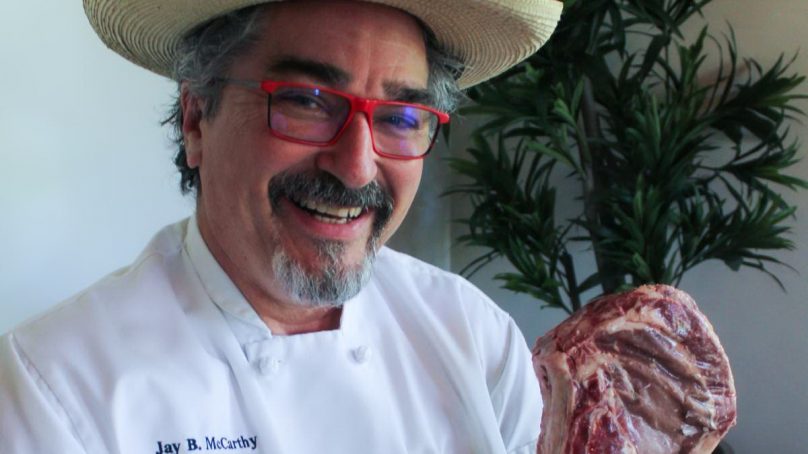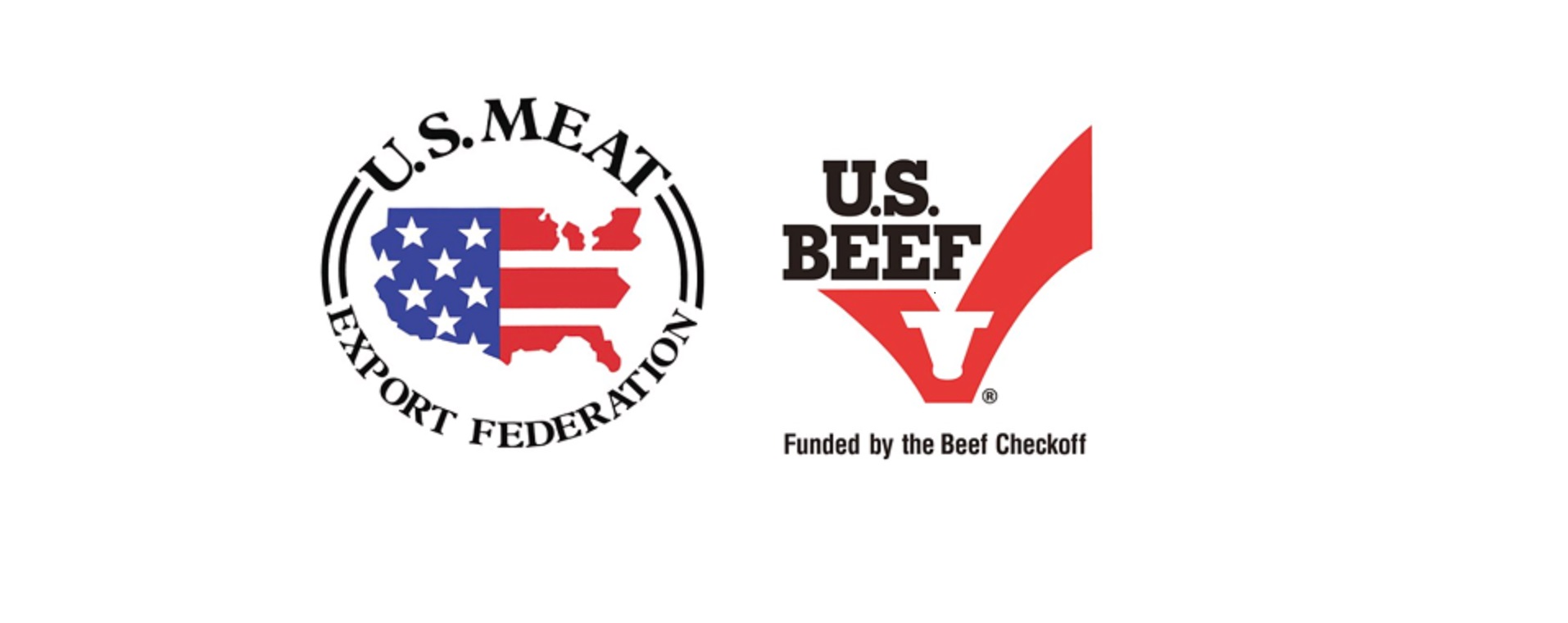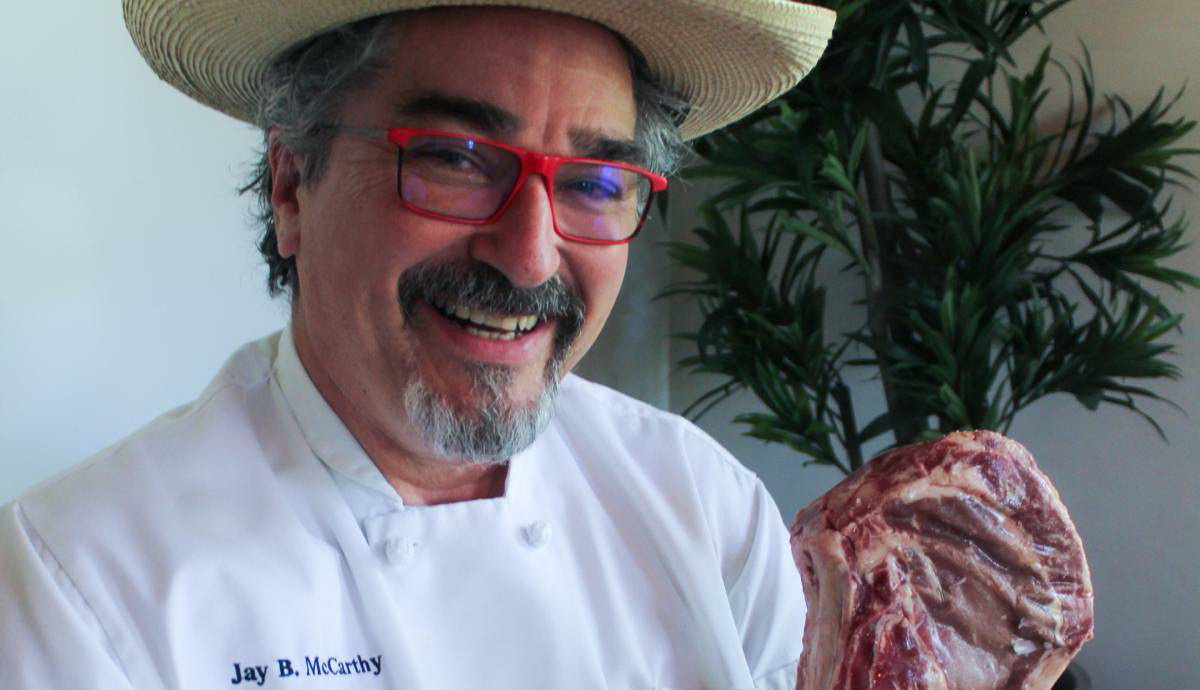As culinary mentor at Destination Hospitality, Chef Jay McCarthy believes that knowledge is power, especially in the kitchen. Here, he explains the importance of flavor, understanding consumers’ needs and why he remains loyal to U.S. beef.
How has consumer behavior toward beef changed in recent years?
There seems to be two mindsets these days: a healthier perspective, which has put into focus the “leaner” cuts, such as tri-tip, flank steak and top sirloin center cut that are great for salads, sandwiches and lighter meals, and are more reasonable in price; and bigger, fattier cuts packed with flavor, like tomahawk ribeye and behemoth served on the bone, both of which are quite expensive yet popular among meat lovers.
What makes U.S. beef so special?
That’s a short question with a long answer. There are many factors involved: the feed, breed, process of raising, grading, harvesting, aging and the packing for distribution. There are also many quality-control processes in place throughout. In the U.S., we have rich corn and pasture lands to support the herds. This abundant food source translates into a consistent flavor profile in the beef.
There are a few breeds that the U.S. industry focuses on, namely Hereford and Angus. These breeds, or their crosses, develop a good flavor balance and the beef marbles well. Marbling is the inter-muscle fat that helps add juiciness and flavor to the beef. A Federal U.S. Beef inspector inspects the marbling of each carcass and then determines the grade. There are several grades, but we mostly focus on just the top three: prime, choice and select. Prime and choice are mostly found in restaurants. Choice and select are generally found in supermarkets.
After further processing of the carcasses, they are typically refrigerated for 14 days to allow natural enzymes to “soften” the muscles. They are then distributed for sale to the end user or consumer. The whole process is closely monitored and tested for temperature control and handling. This is one of the many reasons why U.S. beef is superior and highly sought after.
Which is the most underrated cut and why?
That’s a great question. I am sure different chefs and butchers would have different answers. Cuts such as the hanging tender, flank steak, tri-tip, top sirloin cap and petit tender would almost certainly make it on the list, but I would lean toward the brisket, which tends to be an inexpensive large cut of beef. It requires a slow cooking method to bring out the finest taste and flavor profile. When a brisket is slow smoked or braised at low temperature, it retains a great beef flavor that is extremely juicy. I often refer to a perfectly cooked brisket as beef butter as it just melts in your mouth.
What are your three top beef tips?
Firstly, render your beef fat trimmings and use them instead of oil or butter. These not only contain more flavor, they also allow you to utilize the whole product.
Secondly, always look for well-marbled beef. The more marbling, the juicier and more flavorful the beef will be.
Thirdly, allow the steak to rest at room temperature before you cook it. This helps it cook more evenly regardless of the method you are using. Let the steak rest again for three to five minutes after it is cooked, allowing the meat fibers to hang onto the juicy flavors in the beef rather than allowing them to spill onto plate, as the heat forces them out.
Which cut do you enjoy working with most?
That is a tough question to answer. Some cuts require a creative cooking solution, which I enjoy. Others need special cutting techniques that can be challenging. Short ribs are among my favorites, as they can be smoked, braised, roasted or grilled. You can also experiment with a variety of presentations, from lollipop to simple single bone in and even short rib pinwheel.
On a personal level, how did you transition from aerospace engineering to a career in the culinary arts?
When I was at university, I got a job at a restaurant. It was a very trendy place at the time. As a student, I got to eat and drink for free, and I got a paycheck at the end of the week. It turned out to be a valuable outlet for me.
When I entered the world of aerospace, I found it extremely corporate and not creative or fun. Therefore, I decided to focus on food. I discovered a few excellent chefs, whom I am still in contact with, and decided to learn the craft. These strong foundations allowed me to get very creative with my food. I have been fortunate enough to cook on planes, trains, boats and even at NASA’s space kitchen. I am still learning and exploring how food nourishes people in different parts of the world.



















